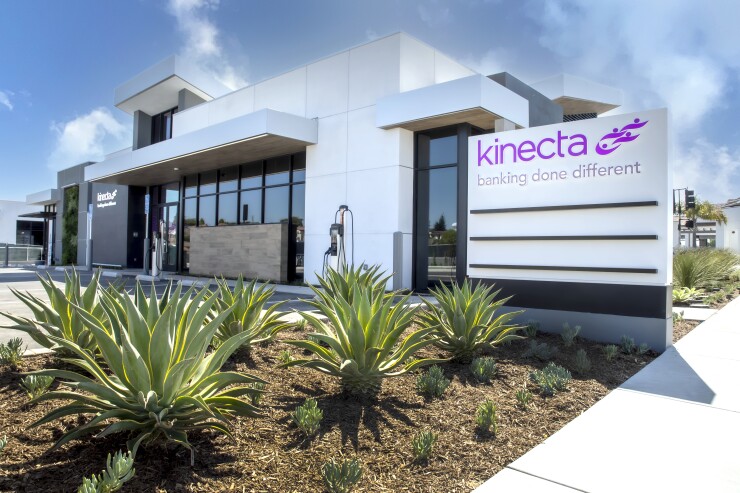
Credit unions saw savings account balances plunge in March, as members withdrew funds to cover daily needs and to search for higher yields.
The average credit union member had $13,818 in total savings deposits in March 2023, down from $14,104 in March 2022. The $286 year-over-year drop is the biggest in credit union history, according to a
The company said the dip was due to partly to middle-income members withdrawing savings to spend on hotels, airfares and restaurants now that the COVID-19 pandemic is coming to an end.
At the same time, some high-income members are withdrawing deposits in search of higher yields.
"This disintermediation of deposits is a big concern for credit unions and the economy in general, as falling deposits could lead to a credit contraction and slower economic growth," said Steve Rick, chief economist for TruStage.
Overall for the first quarter,
Kinecta Federal Credit Union in Manhattan Beach, California, is one institution that has seen a dip in deposits and also a shift in the mix.
The $6.7 billion-asset credit union had total shares and deposits just below $6 billion at the end of the first quarter, down 3% from a year earlier.
Kinecta CEO Keith Sultemeier said there has been a consistent, gradual decline in demand deposits due to increased spending, as members are having to pay more for their daily purchases as prices increase.
"This is the primary driver of overall deposit declines," Sultemeier said. "There is some discretionary spending of remaining COVID-19 stimulus, but this is mostly gone today."
Kinecta's deposit balance per member is down about 2.4% year over year, and the company has also seen a shift from
"In our markets, we've seen competition for deposits heat up considerably. Banks and credit unions have increased rates to remain competitive, protect their existing deposit base and insure they maintain adequate liquidity," Sultemeier said.
And net interest margins are getting squeezed as a result.
The scale and velocity of Federal Reserve rate increases and an inverted yield curve haven't helped, but Sultemeier said the situation is manageable.
Kinecta is planning ahead for two additional rate increases from the Fed, but
"We are comfortable with our liquidity and plan to keep our rates competitive, but will likely not seek high deposit growth this year," Sultemeier said.
The news hasn't been any better for banks, although there may be some hope on the horizon.
Deposits plummeted across the banking sector in March following the
The U.S. banking sector lost 2.5% of its deposit base in the first quarter, according to S&P Global Market Intelligence data.
Federal Reserve data showed that most banks
Analysts widely expect that banks will report deposit levels are in steady recovery mode, but with interest rates high and competition fierce, the cost of that funding is widely projected to jump. This would cause net interest margins to contract, eating into profits.
"The deposit panic from several months ago appears to have subsided across the industry, as evidenced by stable-ish deposit levels," said Piper Sandler analyst Matthew Clark. "A lasting impact, however, is that depositors have woken up to how much they can earn on their money, which has accelerated the shift into higher-yielding products."
Geoff Bacino, a consultant and former NCUA board member, said the drop in credit union savings mirrors that of the rest of the financial industry. With the cost of most things going up, credit union members are experiencing the same hardships that many Americans are facing.
Even everyday items such as groceries are now being purchased through
"There may not be much that credit unions can do to mitigate it, as these are factors beyond institutional control," Bacino said. "But credit unions have to consider these factors when addressing issues with members such as collections and delinquencies."






